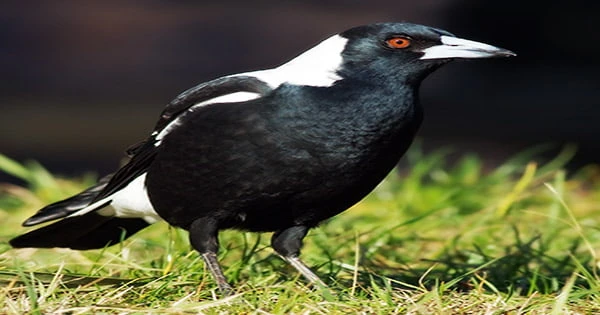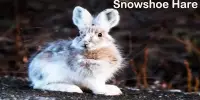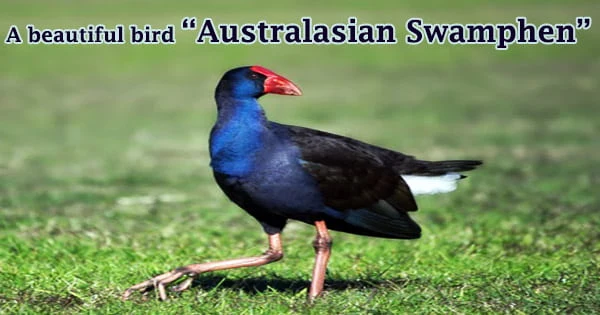The Australian magpie (Gymnorhina tibicen) is a medium-sized songbird with a sturdy wedge-shaped bluish-white and black beak and unique black and white plumage. It’s a black-and-white passerine bird that’s native to Australia and southern New Guinea. It was originally thought to be three different species, but it is now regarded as a single species with nine recognized subspecies. The male and female have similar appearances but differ in their back markings. On the back of the head, the male has pure white feathers, while the female has white feathers that fade into grey. The Australian magpie walks rather than waddles or hops and spends a lot of time on the ground, thanks to its long legs. The Australian magpie, a member of the Artamidae family, has its own genus, Gymnorhina, and is most closely related to the black butcherbird (Melloria quoyi). The European magpie, which is a corvid, is not closely related to it. The Australian Magpie is diminishing in some locations but increasing in others, according to research published in the ‘State of Australia’s Birds 2015’ headline and regional reports. Reporting rates for this species have decreased dramatically on the East Coast since 1998. The adult Australian magpie is a muscular bird with a solid wedge-shaped bluish-white and black beak that ranges in length from 37 to 43 cm (14.5 to 17 in). It has unique black and white plumage, gold brown eyes, and a solid wedge-shaped bluish-white and black bill. The male and female have similar appearances, with back markings that differentiate them. On the back of the head, the male has pure white feathers, while the female has white feathers that fade into grey. The Australian magpie walks rather than waddles or hops, and spends a lot of time on the ground, thanks to its long legs. The rest of the body is black across most of Australia. The back and rump are totally white in the south-east, center, extreme south-west, and Tasmania. Adult birds have chestnut brown eyes. Australia, southern New Guinea, and Indonesia are home to Australian magpies. They like open places with scattered trees or forest nearby, such as grassland, savannah, fields, and residential areas such as parks, gardens, golf courses, and streets. They also live in mature pine plantations, rainforests, and wet sclerophyll forests.

The Pied Butcherbird, Cracticus nigrogularis, differs from the Australian Magpie by having a black head and bib separated from the black back by a complete white collar, as well as white underparts. It’s also a diminutive species. The Australian Magpie, Grallina cyanoleuca, is larger and has a heavier bill than the Magpie-lark, Grallina cyanoleuca. The Australian magpie is one of Australia’s most talented songbirds, with a variety of complicated vocalizations. It is omnivorous, with invertebrates making up the majority of its diversified diet. Throughout its range, it is sedentary and territorial. It is a common and ubiquitous bird in Australia and New Guinea that has adapted well to human life and is a familiar sight in parks, gardens, and farming. Wherever there is a combination of trees and adjacent open areas, such as parks and playing fields, Australian Magpies can be found. Only the densest forests and dry deserts are devoid of them. The adult magpie is 37–43 cm (14.5–17 in) long, with a wingspan of 65–85 cm (25.5–33.5 in) and a weight of 220–350 g (7.8–12.3 oz). It has a powerful wedge-shaped bill that is bluish-white with a black border and a little hook at the tip. Magpies are a common and noticeable bird in Australia. Year-round, groups of up to 24 birds reside in territories that are aggressively guarded by all members of the group. This domain serves as the group’s feeding, roosting, and nesting grounds. Wherever there is a combination of trees and adjacent open areas, such as parks and playing fields, Australian Magpies can be found. Only the densest forests and dry deserts are devoid of them. In contrast to the yellow eyes of currawongs and the white eyes of Australian ravens and crows, mature magpies have dull red eyes. The Australian Magpie forages hunts insects and their larvae on the ground. Birds will also accept human handouts and will frequently enter open houses to beg for food. Although the Australian Magpie is normally docile, during the breeding season, some birds become violent toward intruders, including humans, who approach their nest sites too closely. A platform of sticks and twigs (occasionally wire) with a small inside bowl lined with grass and hair makes up the nest. The nest is built in the tree’s outer branches, up to 15 meters above the ground. The female lays 2 to 5 oval light blue or greenish eggs in a clutch. Around 20 days after incubation begins, the chicks hatch. The chicks are altricial, with huge feet, a short broad beak, and a bright red neck. They are born pink, naked, and blind. At roughly 10 days, their eyes are fully awake. It’s difficult to quantify the percentage of magpies that swoop, although it’s probably less than 9%. Almost all attacking birds (about 99 percent) are males, and they are known to attack pedestrians and cyclists within 50 meters (160 feet) of their nest. There appears to be some specialization in assault targets, with the vast majority of people focusing on either pedestrians or bikers. The Australian magpie sings a loud flute-like song that is frequently delivered as a duet or in groups. During the breeding season, some Australian Magpies can be highly aggressive, attacking humans and pets. Magpies are protected in NSW, and it is illegal to kill, harvest eggs, or injure their young. The total population size of the Australian magpie is unknown, according to the IUCN Red List and other sources. This species is now rated as Least Concern (LC) on the IUCN Red List, and its population is growing.















